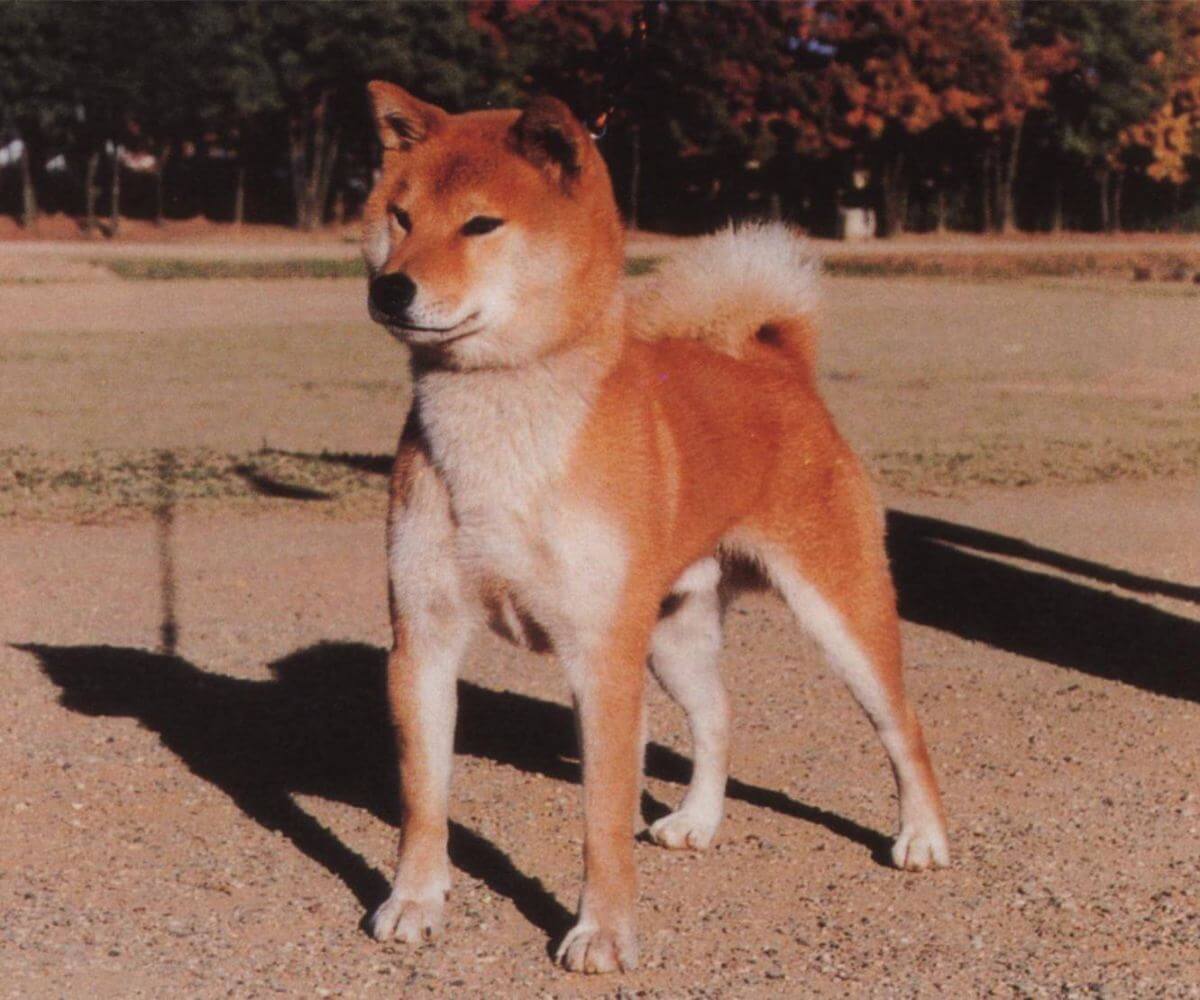
Home » Judging the Shiba Inu

This article was originally published in Showsight Magazine, January 2014 issue.
The Shiba Inu is one of the more primitive breeds in the AKC family of dogs. Japanese skeletal remains date the early ancestors of the Shiba Inu at over 10,000 years old. The domestic dog is a descendant of the Asian Gray Wolf. A study of the DNA of 85 purebred dog breeds published in the March 2012 issue of the National Geographic cites the Shiba Inu as the breed most closely aligned genetically with the Asian Gray Wolf. The Shiba has remained relatively unchanged and the primitive nature of the breed is an important element of understanding the breed. The Shiba Inu along with five other native Japanese breeds evolved over time from the original descendants of the Asian Gray Wolf. Most of the type characteristics are common among these six breeds with size and color as the primary traits that distinguish the individual breeds. The Shiba is the smallest of the native Japanese breeds. The traits that define the Shiba are a combination of form, function, and temperament.
The three areas of form that receive the most attention from breeders are the head, size, and coat color. These traits are often the most difficult to achieve and retain. The head combines the muzzle, the skull shape, the eye, the ear, and cheeks.
The Shiba has been utilized throughout its early history as a hunting dog. The Shiba travels a variety of terrain from high mountainous regions to open fields. The Shiba is sturdy without appearing heavy-boned or refined. The Shiba is built to work tirelessly for extended periods with balanced structure critical to performance. The Shiba possesses effortless movement allowing for bursts of speed and quick course corrections.
The Shiba thrives in extreme ranges of temperature. A trait that allows the Shiba to function in extreme weather is the coat. The Shiba carries a double coat where the guard or outer coat is coarse, stiff, and straight and the undercoat is soft and dense. A long, woolly or soft coat is faulted and it is preferred that the Shiba is presented in a natural state. Trimming or sculpting of the coat must be severely penalized.
These carnivorous dogs easily adapted to the requirements of the Japanese hunter throughout early history. Full dentition and the alignment of the teeth is an important consideration for these hunting dogs. The Shiba throughout history has been utilized as a hunter of game ranging in size from small birds to boar. The job of the Shiba when hunting boar was to contain the boar until the hunter arrived with spears. The Shiba would circle the boar attacking from the rear at the hamstrings to slow down or immobilize. The full complement of correctly aligned teeth was critical to the Shiba’s survival.
Several of the early Shibas in the foundation stock comprising the gene pool in the US had missing teeth. The version of the Standard adopted by AKC when the breed entered the Non-Sporting Group in June 1993 simply stated “full dentition preferred.” Unfortunately, several of the early AKC champions had missing teeth; some in significant numbers. The NSCA members understood the importance of honoring the judging requirements in the country of origin as well as the heritage of the breed and felt that dentition required emphasis from breeders and judges alike. The members of NSCA felt that breeders needed time to reduce the number of missing teeth and in 1997 the Standard was modified to specify that more than 4 missing teeth are a serious fault. In time the Standard may be revised in steps to specify more than two missing teeth as a serious fault, with the ultimate goal of full dentition as a requirement.
The Shiba Inu should carry himself with a “spirited boldness” and dignity. The Shiba Inu does not understand that he is not the biggest dog in the crowd and firmly believes that he is the most important dog in the area where he is present. The quiet confidence of the Shiba is manifested by a dog that is secure in his environment and under the control of his owner or handler. While puppies may exhibit enthusiasm for greeting any stranger, adults are often more reserved and aloof. When greeting a stranger, the adult Shiba has yet to determine if it is worth his while to expend any effort on the newcomer to his world.
Judges should not be expected to tolerate aggressive behavior from a Shiba and AKC has procedures for dogs that display aggressive behavior in the ring. Shy dogs raise a bigger question and the key element in the Standard is the word overt. A Shiba may be unsure of herself the first few times she shows and will gain confidence with each show experience. However, the Shiba that displays overt shyness with behaviors such as trembling, cringing, or low crawling should be excused. Fear-based aggression may be a factor in the show ring more often than dominance aggression. The judge or the exhibitor should not push a Shiba into a fear aggression response.
The National Shiba Club of America has developed a program for educating judges that places emphasis on judging the overall dog and discourages fault judging. The “perfect” Shiba does not exist and in most circumstances the strengths of the dog will offset any minor faults possessed by the dog. The Standard states “A harmonious balance of form, color, movement, and temperament is more critical than any one feature.